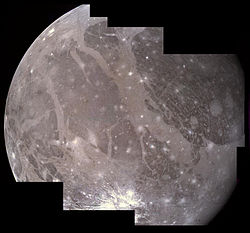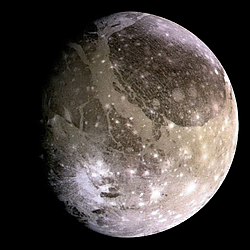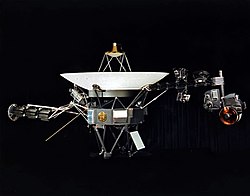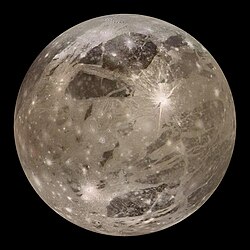PIA00519 Interior of Ganymede
Formát:
2667 x 2000 Pixel (624626 Bytes)
Popis:
Interior of Ganymede: Voyager images are used to create a global view of Ganymede. The cut-out reveals the interior structure of this icy moon. This structure consists of four layers based on measurements of Ganymede's gravity field and theoretical analyses using Ganymede's known mass, size and density. Ganymede's surface is rich in water ice and Voyager and Galileo images show features which are evidence of geological and tectonic disruption of the surface in the past. As with the Earth, these geological features reflect forces and processes deep within Ganymede's interior. Based on geochemical and geophysical models, scientists expected Ganymede's interior to either consist of: a) an undifferentiated mixture of rock and ice or b) a differentiated structure with a large lunar sized "core" of rock and possibly iron overlain by a deep layer of warm soft ice capped by a thin cold rigid ice crust. Galileo's measurement of Ganymede's gravity field during its first and second encounters with the huge moon have basically confirmed the differentiated model and allowed scientists to estimate the size of these layers more accurately. In addition the data strongly suggest that a dense metallic core exists at the center of the rock core. This metallic core suggests a greater degree of heating at sometime in Ganymede's past than had been proposed before and may be the source of Ganymede's magnetic field discovered by Galileo's space physics experiments.
Více informací o licenci na obrázek naleznete zde. Poslední aktualizace: Sat, 06 Jan 2024 16:11:11 GMT
Relevantní obrázky
Relevantní články
Ganymedes (měsíc)
Ganymedes je největší Jupiterův měsíc a současně i největší měsíc ve Sluneční soustavě. Společně s Io, Europou a Callisto se řadí mezi Galileovy měsíce. Je větší než planeta Merkur, ale má přibližně jen polovičku její hmotnosti. I tak je ale nejhmotnějším měsícem ve Sluneční soustavě a je 2,01 krát hmotnější než pozemský Měsíc. Ganymedes má průměr 5 262 km. Od Jupiteru je vzdálen 1,07 milionu km a jeho doba oběhu okolo planety je 7,15 pozemského dne. Kdyby Ganymedes obíhal kolem Slunce místo okolo Jupitera, byl by považován za planetu. Spolu s dalšími měsíci Europa a Io je Ganymedes v dráhové rezonanci v poměru 1:2:4 a vůči Jupiteru má vázanou rotaci.
.. pokračovat ve čtení










